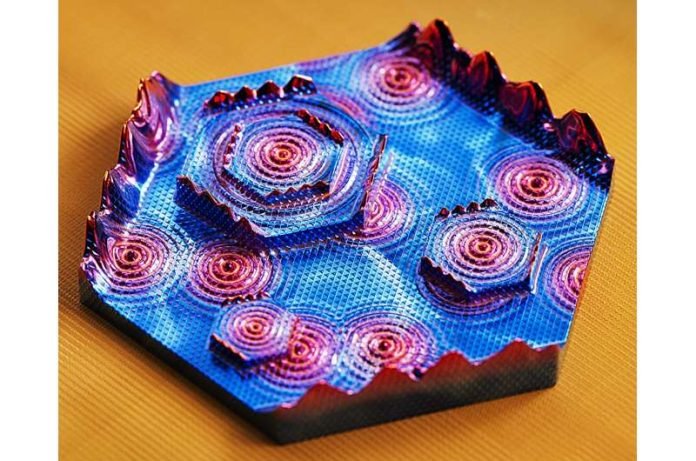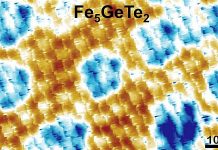
Scientists have made a groundbreaking discovery in the world of quantum physics and materials science, unveiling a novel quantum phenomenon called “hybrid topology” in a simple arsenic crystal.
This finding, detailed in a study published in Nature, not only challenges our understanding of quantum states but also opens up exciting new avenues for the development of advanced materials and quantum technologies.
The team of researchers from Princeton University, led by Professor M. Zahid Hasan, found that arsenic, a basic element on the periodic table, exhibits a complex form of quantum behavior never seen before.
By using advanced imaging techniques like scanning tunneling microscopy (STM) and photoemission spectroscopy, they were able to see how arsenic atoms organize themselves in a way that supports a unique state of matter.
This state is a mix, or “hybridization,” of two kinds of quantum behavior—edge states and surface states—which, until now, were observed separately in other materials.
The discovery was unexpected. Traditional theories had not predicted the possibility of these two quantum states coming together in such a way.
Topology, a branch of mathematics that studies shapes and their properties, has become a crucial tool in understanding how quantum states can exist in materials.
The idea that a material could be an insulator inside but conduct electricity on its edges or surfaces due to its topological nature has been a subject of intense study.
Yet, finding such effects in a simple element like arsenic was surprising and hints at the untapped potential of elemental solids in quantum physics.
The significance of this discovery lies in its implications for the future of quantum science and engineering.
Topological materials are at the forefront of research for their unique properties, particularly their ability to conduct electricity on their surfaces or edges without interference, a trait invaluable for developing new, more efficient technologies.
The Princeton team’s work demonstrates that arsenic, an elemental solid, can host these complex quantum states, suggesting that other simple materials might also possess unseen topological properties.
This research builds on a rich history of exploration into topological phases of matter, a field that has been recognized with several Nobel Prizes.
The discovery of the quantum Hall effect and the subsequent identification of topological insulators and superconductors have paved the way for a deeper understanding of matter’s quantum behavior.
Professor Hasan’s group has been at the forefront of this exploration, uncovering new dimensions of topological matter over the past decade.
The team’s findings regarding arsenic challenge previous assumptions and show that even well-studied elements can host surprising quantum phenomena.
By combining different experimental techniques, they were able to observe the hybrid topological state in detail, opening the door to engineering new types of quantum materials and devices.
These materials could revolutionize fields like quantum computing and information science by providing new ways to manipulate quantum information.
Moreover, the discovery of hybrid topology in arsenic emphasizes the importance of fundamental research in uncovering the mysteries of the quantum world.
It highlights how simple elements can offer complex and rich quantum behaviors, expanding our toolbox for designing future technologies.
As researchers continue to explore the quantum landscape, findings like these underscore the potential of quantum materials to transform technology and deepen our understanding of the universe’s fundamental laws.
The research findings can be found in Nature.
Copyright © 2024 Knowridge Science Report. All rights reserved.



